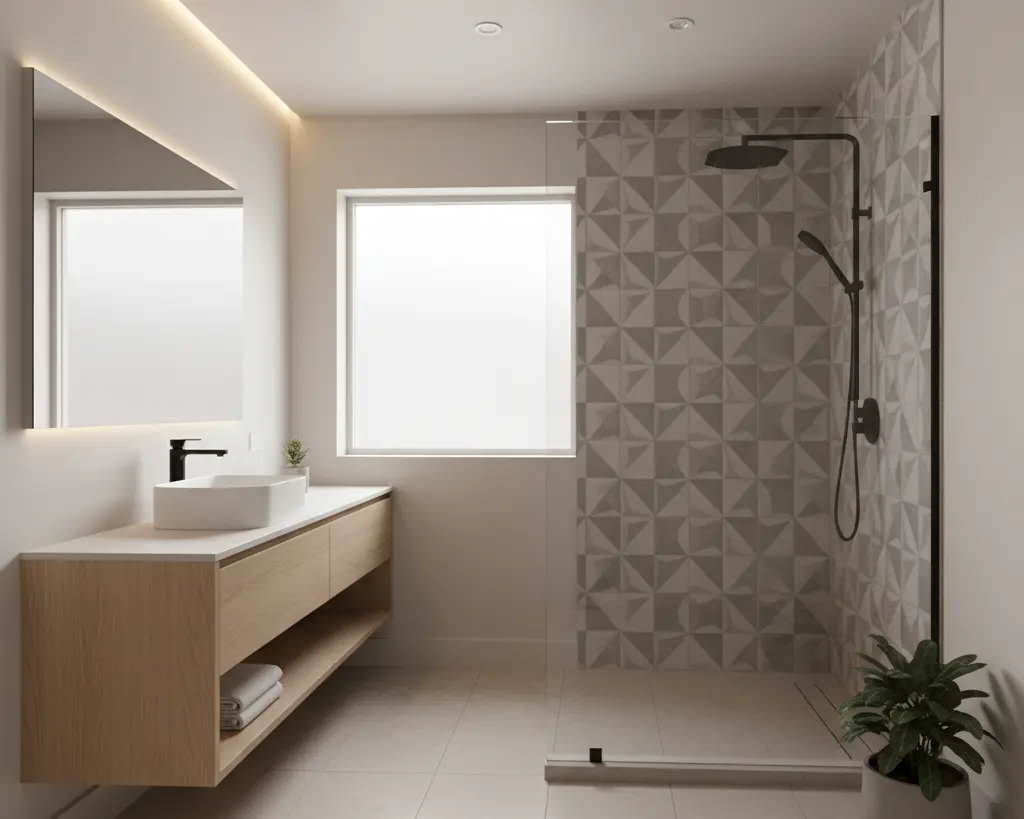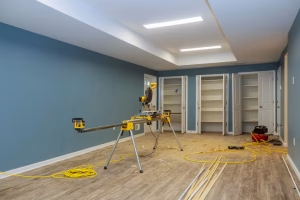Planning a bathroom renovation and wondering how to pay for it? Understanding bathroom renovation financing options makes the difference between a stalled idea and a smooth project. Edmonton homeowners face a unique mix of priorities: durable materials for seasonal changes, proper ventilation and permits, and the need to balance aesthetics with long-term value. Choosing the right financing path helps you manage cash flow, protect your home, and get the right team and materials in place.
Steadfast Constructions Ltd. supports Edmonton homeowners from the first site visit through final inspection. We help clients match financing choices to project scope, handle permit-ready drawings, and coordinate licensed trades so you get value out of every dollar. This long guide explains the financing choices most commonly used in Edmonton, how permits and timelines interact with financing, local resources and programs to consider, and practical steps to prepare your application. I’ll also include real local examples and expert tips so you can move forward with confidence.
Common financing routes homeowners use
When homeowners search for bathroom renovation financing, they generally consider one of several routes. Each has strengths and trade-offs depending on your home, timeline, and comfort with debt.
Mortgage-based options
Many homeowners leverage existing mortgage arrangements to access funds for renovations. Lenders can offer mortgage refinancing or mortgage add-ons that consolidate renovation financing with your primary mortgage. These options are handled through banks and mortgage specialists and typically require appraisal and lender approval. Talking to your mortgage provider early helps you understand document requirements and timelines. RBC Royal Bank
Home equity lines of credit and lines of credit
Home equity lines of credit (HELOCs) and secured lines of credit are flexible when you plan staged work or want a reusable source of funds. They let you draw funds as the work progresses and repay gradually. These products are offered by major Canadian banks and are often positioned as a good fit for renovations that occur in phases.
Unsecured personal loans
For homeowners who prefer not to use home equity, unsecured personal loans from banks or credit unions are an option. They provide a fixed advance with predictable repayment terms. Because they are not secured by the property, approval depends more on credit profile and income documentation.
Credit cards and short-term credit
Some homeowners use credit cards for smaller items or short-term needs. Cards are convenient but generally best for limited purchases rather than whole-project financing because of higher interest profiles. Use them selectively for materials or interim buys where convenience matters and balances are controlled.
Government programs and green loans
Federal and provincial programs sometimes offer incentives or financing for energy-efficient upgrades. For example, the Canada Greener Homes initiative provides financing options to support certain home efficiency upgrades. If your bathroom upgrade includes efficient water fixtures or ventilation improvements tied to energy savings, program eligibility is worth checking. Natural Resources Canada
What lenders look for
Understanding lender priorities helps you prepare a successful application for bathroom renovation financing.
Property and borrower factors
Lenders typically review:
- Your credit and income stability.
- The home’s value and equity are available.
- The scope of the renovation and whether permits or professional plans are in place.
Having permit-ready drawings and a clear contractor scope reduces lender uncertainty. Steadfast Constructions Ltd. provides permit-ready documentation and project scopes that many lenders find helpful during assessment.
Project documentation that helps
Before you apply, gather:
- A written, itemized scope of work from your contractor.
- Any required permit applications or permit-ready plans.
- Proof of contractor licensing, insurance, and WCB coverage.
- A realistic construction timeline.
These documents reassure lenders that the work is professional, permitted, and scheduled, which supports approval and keeps the project moving.
Local programs and incentives to explore
Edmonton homeowners can benefit from several local and national programs tailored to home improvements. Including relevant program details in your plan can change which financing route makes sense.
Canada Greener Homes and energy-focused supports
If your renovation improves energy efficiency, the Canada Greener Homes program provides resources and loan information for eligible upgrades. Even when a bathroom remodel is mostly cosmetic, adding ventilation upgrades or water-efficiency measures may connect parts of the project to these supports. Check program details to confirm eligibility and documentation requirements. Natural Resources Canada
CMHC and insured financing for renovation-related mortgages
CMHC describes financing options that relate to home improvements and insured financing in certain purchase scenarios. For homeowners refinancing or purchasing with planned improvements, CMHC resources outline how renovation objectives fit into insured mortgage discussions. This is particularly relevant if you’re combining a home purchase and immediate renovations. Canada Mortgage and Housing Corporation
Local grant and rebate options
Municipal programs occasionally offer rebates or support for specific upgrades—often focused on energy or water efficiency. Check City of Edmonton resources and provincial programs for current rebate opportunities that align with ventilation, insulation, or water-saving fixture upgrades. Using these grants alongside financing reduces overall reliance on credit. City of Edmonton
Matching financing to project type and timing
Different project scopes call for different financing approaches. Align financing with how the work will be completed to avoid shortfalls or liquidity stress.
Staged projects vs single-phase remodels
If you plan a multi-stage renovation, design, rough-ins, finishes, a line of credit, or HELOC offers flexibility to pay as each phase starts. For single-phase projects where funds are required upfront for materials and contractor deposits, a secured mortgage advance or personal loan may be simpler to manage.
Steadfast Constructions helps homeowners create phased project schedules and procurement lists so you and your lender both understand cash flow timing.
Renovations with structural or mechanical work
If your bathroom renovation involves structural changes, moving plumbing, or upgrading ventilation and heating, lenders may expect permits and engineering sign-offs. Having those documents in place at the application reduces delays and supports a smoother approval process.
Preparing a strong application
A strong financing application reduces friction and helps you start your renovation on time.
A checklist for applicants
Before you apply for financing, prepare:
- Clear contractor scope, materials list, and timeline.
- Proof of contractor licensing and insurance.
- Permit-ready drawings if the work will trigger permits.
- Personal financial documents requested by your lender.
- Any supporting program applications (energy rebates or grants) that will be part of the financial plan.
Applicants who submit a complete package often receive faster decisions from lenders and avoid last-minute funding gaps. Steadfast Constructions often assists clients by supplying the technical and permit-ready documentation lenders want to see.
Real-world Edmonton examples
Concrete examples illustrate how homeowners mix financing and project planning.
Example: Comprehensive ensuite update
An Edmonton homeowner upgraded an ensuite with a new shower enclosure, ventilation upgrade, and upgraded finishes. The homeowner worked with their mortgage lender to add an advance to the mortgage while saving a portion of the project costs in a line of credit for finishes ordered later. The contractor coordinated permit submissions and provided a phased schedule so funds were drawn only when milestones were met.
Example: Small family bathroom modernization
For a smaller family bathroom refresh focused on fixtures and tile, another homeowner used a combination of a personal loan for immediate purchases and phased payments to the contractor. The homeowner prioritized replacing the exhaust fan and adding moisture-proof finishes first, aligning financing draws with the scope.
Both examples highlight the value of matching financing to timeline and of involving a contractor who prepares permitting and sequencing documents early.
Working with contractors and lenders
Collaboration between your contractor and lender smooths the process.
What contractors can do to help
A contractor who provides clear, professional documentation reduces lender questions. Actions that matter:
- Deliver an itemized scope and materials list.
- Explain inspection and permit milestones.
- Provide a schedule that aligns with draw requests.
Steadfast Constructions offers these services and can communicate directly with lenders when needed to explain project staging and permit timing.
Lender questions contractors should expect
Lenders often ask about permits, trade licensing, and whether the project affects structural elements. Being ready with answers avoids delays. If your contractor plans to subcontract specialized trades (plumbing, electrical), lenders may request the subcontractor’s credentials as well.
Contracts and documentation
When financing a bathroom renovation, protect yourself with clear paperwork.
Contracts that reduce risk
A straightforward contract should list:
- The full scope of work and exclusions.
- Project milestones and what triggers payments.
- Warranty and maintenance notes.
- The permit and inspection responsibilities.
A clear contract helps you and your lender assess progress and gives you recourse if work deviates from the plan.
Keep a project binder
Record all permits, inspection sign-offs, invoices, supplier warranties, and before-and-after photos. This binder documents that funds were used as planned and will be useful for future resale or warranty claims.
Steadfast Constructions supplies final handover documentation and warranty information as part of project completion.
Common pitfalls and how to avoid them
Knowing common mistakes prevents delays and extra stress.
Pitfalls to watch for
- Starting work before permits are approved. This can interrupt inspections, hold up funding, and create complications with lenders.
- Not matching financing draws to project sequencing. Draw timing that doesn’t match work leads to idle funds or delayed trades.
- Using short-term credit for long-term obligations. Ensure you pick financing suited to repayment capacity and the project’s life cycle.
Work closely with your contractor and lender to align permits, draws, and scheduling to avoid these issues.
Sustainability, green upgrades, and financing links
If your renovation includes energy or water-efficiency upgrades, there are additional financing and grant options to explore.
Green upgrades that may qualify for support
Upgrades such as improved ventilation systems, efficient water fixtures, and insulation improvements can sometimes qualify for federal or provincial incentives. Check the Canada Greener Homes and related provincial offerings to see what documentation is needed. Including these upgrades in your plan can expand financing and rebate options.
Next steps for Edmonton homeowners
Ready to move forward? Here’s a straightforward path to get your financing and project in sync.
Action plan
- Define the scope and priorities for your bathroom renovation.
- Arrange a site visit with a contractor (Steadfast Constructions Ltd. can help).
- Ask your contractor for a permit checklist and a project schedule.
- Contact your lender to discuss options and document needs.
- Apply for any energy or municipal programs that align with your planned upgrades.
- Gather required documents and submit a complete financing package.
A coordinated approach reduces surprises and helps your project proceed on schedule.
Conclusion
Choosing the right bathroom renovation financing path matters as much as choosing finishes and fixtures. Whether you use mortgage-based options, a line of credit, a personal loan, or combine financing with green program supports, the key is matching the financing to your project timeline and having permit-ready plans and contractor documentation ready. That reduces lender friction and keeps the renovation moving.
Steadfast Constructions Ltd. helps Edmonton homeowners at each step: from scoping and permit-ready drawings through contractor coordination and final handover. If you’re planning a bathroom renovation and want help aligning financing, permits, and construction sequencing, contact Steadfast Constructions Ltd. for a consultation. We’ll review your project, prepare the documentation lenders want, and manage the build so your renovation is safe, legal, and well executed.
Frequently Asked Questions (FAQs)
Q1: What financing options are available for bathroom renovation financing in Edmonton?
A1: Common routes include mortgage-based options (refinance or mortgage add-ons), home equity lines of credit, unsecured personal loans, credit cards for smaller items, and energy-focused government programs for qualifying upgrades. Discuss options with your lender and contractor to find the best fit.
Q2: Do I need permits before applying for bathroom renovation financing?
A2: You do not always need permits before applying, but having permit-ready drawings and knowing which permits the project requires strengthens a financing application. Projects that change plumbing or structure often require permits in Edmonton.
Q3: Can energy-efficiency upgrades in my bathroom help with financing?
A3: Yes, certain federal and provincial programs support energy-efficient upgrades and may offer loans or grants. Examples include federal initiatives to support home energy improvements; check program criteria to confirm eligibility.
Q4: How can a contractor help with my financing application?
A4: A professional contractor provides itemized scopes, permit-ready drawings, licensing and insurance proof, and project schedules. These documents reassure lenders about the project’s feasibility and reduce application delays.
Q5: What documents do lenders commonly request for bathroom renovation financing?
A5: Lenders typically request identity and income verification, proof of property ownership, contractor scope and credentials, permit information where applicable, and any program application documents for grants or energy financing. Preparing these in advance speeds approval.







